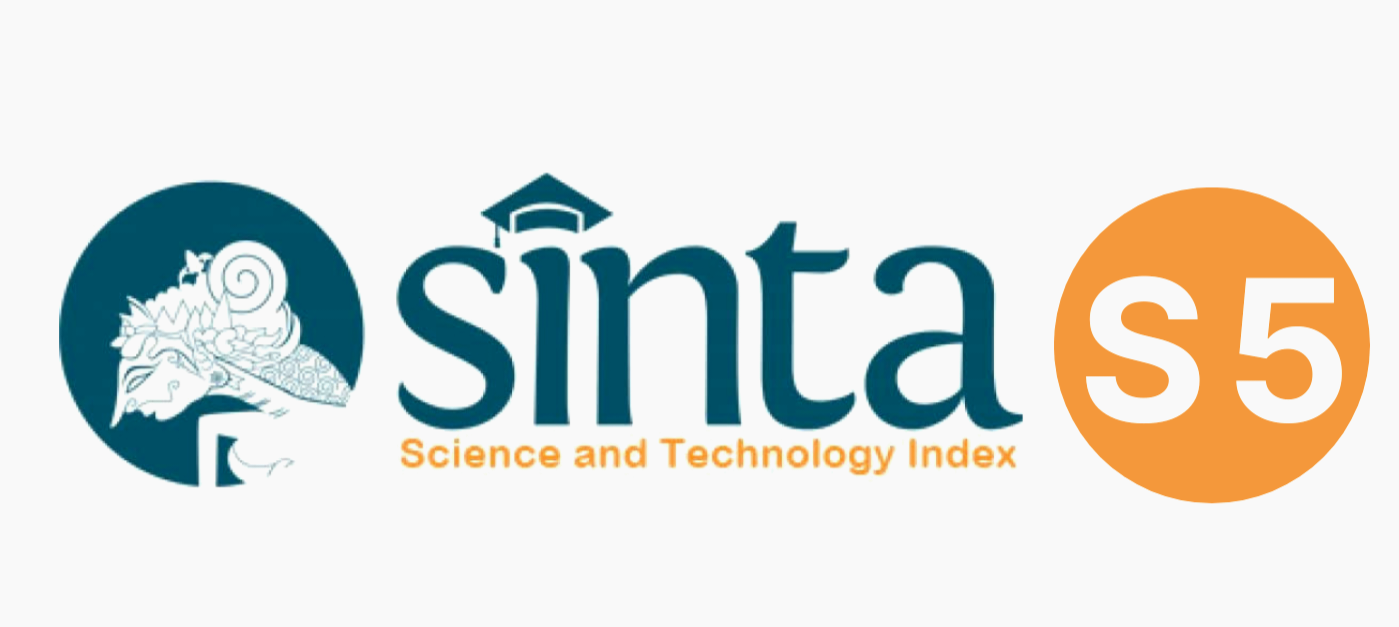Pengukuran Kinerja UMKM Berdasarkan Key Performance Indicators (KPI) Metode Balanced Scorecard
Abstract
Small and Medium Enterprises (SMEs) play a crucial role in economic growth, creating employment, and poverty alleviation. However, they often face numbers of obstacles that hinder them to grow which raises the need to undertake good managerial practices such as performance measurement. Measuring performance enables firms SMEs to evaluate their performance and to conduct any corrective actions for improvement in the future. This study aims to measure the performance of Culinary SMEs in the city of Tomohon using key performance indicators based on each perspective of the Balanced Scorecard. There are nine indicators used in this study namely net profit margin, efficiency ratio, customer satisfaction, customer profitability, product innovation, manufacture cycle effectiveness, employee satisfaction, employee productivity, and employee training. The results show a good performance of the SMEs in financial and customer perspectives, however, the internal business and growth and learning perspectives indicate a poor performance specifically in product innovation and employee training indicators. Overall, the performance of the Culinary SMEs in Tomohon is not optimal which requires more improvement both from the SMEs themselves but also from the government as authorities.
References
Ahmedova, S. (2015). Factors for Increasing the Competitiveness of Small and Medium- Sized Enterprises (SMEs) in Bulgaria. Procedia - Social and Behavioral Sciences, 195, 1104–1112. https://doi.org/10.1016/j.sbspro.2015.06.155
Awadallah, E. A., & Allam, A. (2015). A Critique of the Balanced Scorecard as a Performance Measurement Tool. International Journal of Business and Social Science, 6(7), 91–99.
Basuony, M. A. K. (2014). The balanced scorecard in large firms and SMEs: A critique of the nature, value and application. Accounting and Finance Research, 3(2), 14–22. https://doi.org/10.5430/afr.v3n2p14
Beard, D. F. (2009). Successful applications of the balanced scorecard in higher education. Journal of Education for Business, 84(5), 275–282.
BPS Kota Tomohon. (2019, January 14). Jumlah Usaha Mikro Kecil Menengah menurut Kecamatan di Kota Tomohon. BPS Kota Tomohon.
Dalziel, P., & Zealand, N. (2011). Leveraging training and skills development in SMEs : A regional skills ecosystem case study. Lincoln University: Agribusiness and Economics Research Unit.
Devani, V. (2015). Pengukuran kinerja perusahaan dengan menggunakan metoda balanced scorecard. Jurnal Sains Dan Teknologi Industri, 13(1), 83–90.
Devani, V., & Rizko, R. A. (2016). Analisis kepuasan pelanggan dengan menggunakan metode customer satisfaction index (csi) dan potential gain in customer value (pgcv). Jurnal Ilmiah Rekayasa Dan Manajemen Sistem Informasi, 2(2), 24–29.
Eggers, F. (2020). Masters of disasters? Challenges and opportunities for SMEs in times of crisis. Journal of Business Research, 116(May), 199–208. https://doi.org/10.1016/j.jbusres.2020.05.025
Eniola, A. A., & Entebang, H. (2015). Government Policy and Performance of Small and Medium Business Management. International Journal of Academic Research in Business and Social Sciences, 5(2). https://doi.org/10.6007/ijarbss/v5-i2/1481
Ernita, F. (2015). Performance measurement using balanced scorecard concept on co - Operatives: Implication in Indonesia. International Journal of Scientific & Technology Research, 4(12), 121–124.
Erwina. (2015). Perancangan dan evaluasi Balanced Scorecard sebagai pengukuran kinerja usaha kecil dan menengah (UKM) di Bogor. Institut Pertanian Bogor.
Florea, R., & Florea, R. (2014). Particular Aspects Regarding Strategic Management Implementation in Romanian SMEs. Economy Transdisciplinarity Cognition.
Giannopoulos, G., Holt, A., Khansalar, E., & Cleanthous, S. (2013). The use of the balanced scorecard in small companies. International Journal of Business and Management, 8(14), 1–22. https://doi.org/10.5539/ijbm.v8n14p1
Hanif, A., & Manarvi, I. A. (2010). Investigating the implementation of balanced scorecard in Pakistani small enterprises. ICAMS 2010 - Proceedings of 2010 IEEE International Conference on Advanced Management Science, 2(June 2018), 574–578. https://doi.org/10.1109/ICAMS.2010.5552987
Indrayani, I., & Khairunnisa, K. (2018). Analisis pengukuran kinerja dengan menggunakan Konsep Value for Money pada pemerintah Kota Lhokseumawe (Studi kasus pada DPKAD Kota Lhokseumawe periode 2014-2016). Jurnal Akuntansi Dan Keuangan, 6(1), 1–10.
Irjayanti, M., & Azis, A. M. (2012). Barrier factors and potential solutions for Indonesian SMEs. Procedia Economics and Finance, 4(Icsmed), 3–12. https://doi.org/10.1016/s2212-5671(12)00315-2
Kaplan, R. S., & Norton, D. P. (2009). The Balanced Scorecard: translating strategy into action. In Harvard Business School Press. Harvard Business School Press.
Kementerian Perindustrian. (2018). Kontribusi UMKM naik. https://kemenperin.go.id/artikel/14200/Kontribusi-UMKM-Naik
Khadafi, M., Heikal, M., & Ummah, A. (2014). Influence analysis of return on assets (ROA), return on equity (ROE), net profit margin (NPM), debt to equity ratio (DER), and current ratio (CR), against corporate profit growth in automotive in Indonesia Stock Exchange. International Journal of Academic Research in Business and Social Sciences, 4(12).
Khikmah, A. (2014). Pengukuran kinerja pemerintah daerah Kabupaten Lamongan berdasarkan Konsep Value for Money. Jurnal Akuntansi AKUNESA, 3(1).
Koesomowidjojo, S. R. M. (2017). Balance Scorecard: Model pengukuran kinerja organisasi dengan empat perspektif. Raih Asa Sukses.
Kostini, N., & Dai, R. M. (2020). Analisis kinerja keuangan usaha kecil dan menengah di Kota Tasikmalaya. Jurnal Pemikiran Dan Penelitian Administrasi Bisnis Dan Kewirausahaan, 4(2), 81–87.
Lonbani, M., Sofian, S., & Baroto, M. B. (2016). Balanced scorecard implementation in SMEs: Addressing the moderating role of environmental uncertainty. Global Business and Organizational Excellence, 28(3), 303–325. https://doi.org/10.1002/j
Mawuntu, P. S. T., & Aotama, R. C. (2019). Micro business development strategy to optimize business locations culinary tourism area. Jurnal Entrepreneur Dan Entrepreneurship, 8(2), 6–15. https://doi.org/10.37715/jee.v8i2.1119
Mihaiu, D. (2014). Measuring performance in the public sector: Between necessity and difficulty. Studies in Business and Economics, 9(2), 40–50.
Mulyadi. (2007). Sistem perencanaan dan pengendalian manajemen: sistem pelipatgandaan kinerja perusahaan. Salemba Empat.
Panagiotakopoulos, A. (2011). Barriers to employee training and learning in Small and Medium-sized Enterprises (SMEs). Development and Learning in Organisations. https://doi.org/10.1108/14777281111125354
Putri, E. H. (2017). Efektivitas Pelaksanaan Program Pengembangan Usaha Mikro Kecil Dan Menengah (UMKM) Di Kota Samarinda (Studi Pada Dinas Koperasi Dan UMKM Kota Samarinda). EJournal Administrasi Negara, 5(1), 5431–5445.
Rangkuti, F. (2011). SWOT balanced scorecard. PT. Gramedia Pustaka Utama.
Riduwan, & Akdon. (2013). Rumus dan data dalam analisis statistika. Alfabeta.
Rismawati, S. E., & Mattalata, S. E. (2018). Evaluasi kinerja: Penilaian kinerja atas dasar prestasi kerja berorientasi kedepan (Vol. 1). Celebes Media Perkasa.
Rompho, N. (2011). Why the Balanced Scorecard fails in SMEs: A case study. International Journal of Business and Management, 6(11), 39.
Sari, M., & Arwinda, T. (2015). Analisis Balanced Scorecard Sebagai Alat Pengukuran Kinerja Perusahaan Pt. Jamsostek Cabang Belawan. Jurnal Riset Akuntansi Dan Bisnis, 15(1), 52–64.
Sedyastuti, K. (2018). Analisis pemberdayaan UMKM dan peningkatan daya saing dalam kancah pasar global. INOBIS: Jurnal Inovasi Bisnis Dan Manajemen Indonesia, 2(1), 117–127.
Sondakh, O. (2017). Measuring Organizational Performance: A Case Study of Food Industry SMEs in Surabaya-Indonesia. International Journal of Scientific Research and Management, 5(12), 7681–7689. https://doi.org/10.18535/ijsrm/v5i12.15
Suci, Y. R. (2017). Perkembangan UMKM (Usaha mikro kecil dan menengah) di Indonesia. Cano Ekonomos, 6(1), 51–58.
Sumantri, B. A., & Permana, E. P. (2017). Manajemen Koperasi dan Usaha Mikro Kecil dan Menengah: Perkembangan, teori dan praktek. Fakultas Ekonomi Universitas Nusantara PGRI Kediri.
Suprapto, B., Wahab, A. H., & Wibowo, A. J. (2009). The implementation of balance score card for performance measurement in small and medium enterprises: Evidence form Malaysian health care services. The Asian Journal of Technology Management, 2(2), 37–49.
Supriatna, S., & Aminah, M. (2014). Analisis strategi pengembangan usaha kopi luwak (studi kasus UMKM Careuh Coffee Rancabali-Ciwidey, Bandung). Jurnal Manajemen Dan Organisasi, 5(3), 227–243.
Suryani, N. K., & FoEh, J. E. H. J. (2018). Kinerja organisasi. Deepublish.
Susilo, Y. (2012). Strategi meningkatkan daya saing umkm dalam menghadapi implementasi cafta dan mea. Buletin Ekonomi.
Wang, Y. (2016). What are the biggest obstacles to growth of SMEs in developing countries? – An empirical evidence from an enterprise survey. Borsa Istanbul Review, 16(3), 167–176. https://doi.org/10.1016/j.bir.2016.06.001
Widodo, I. (2011). Analisis kinerja perusahaan dengan menggunakan pendekatan Balanced Scorecard: studi kasus pada perusahaan mebel PT. Jansen Indonesia. Unviersitas Diponegoro.
Yusuf, A. M. (2017). Metode penelitian: Kuantitatif, kualitatif, dan penelitian gabungan. Kencana.
 Abstract viewed = 2146 times
Abstract viewed = 2146 times
 PDF (Bahasa Indonesia) downloaded = 5226 times
PDF (Bahasa Indonesia) downloaded = 5226 times





